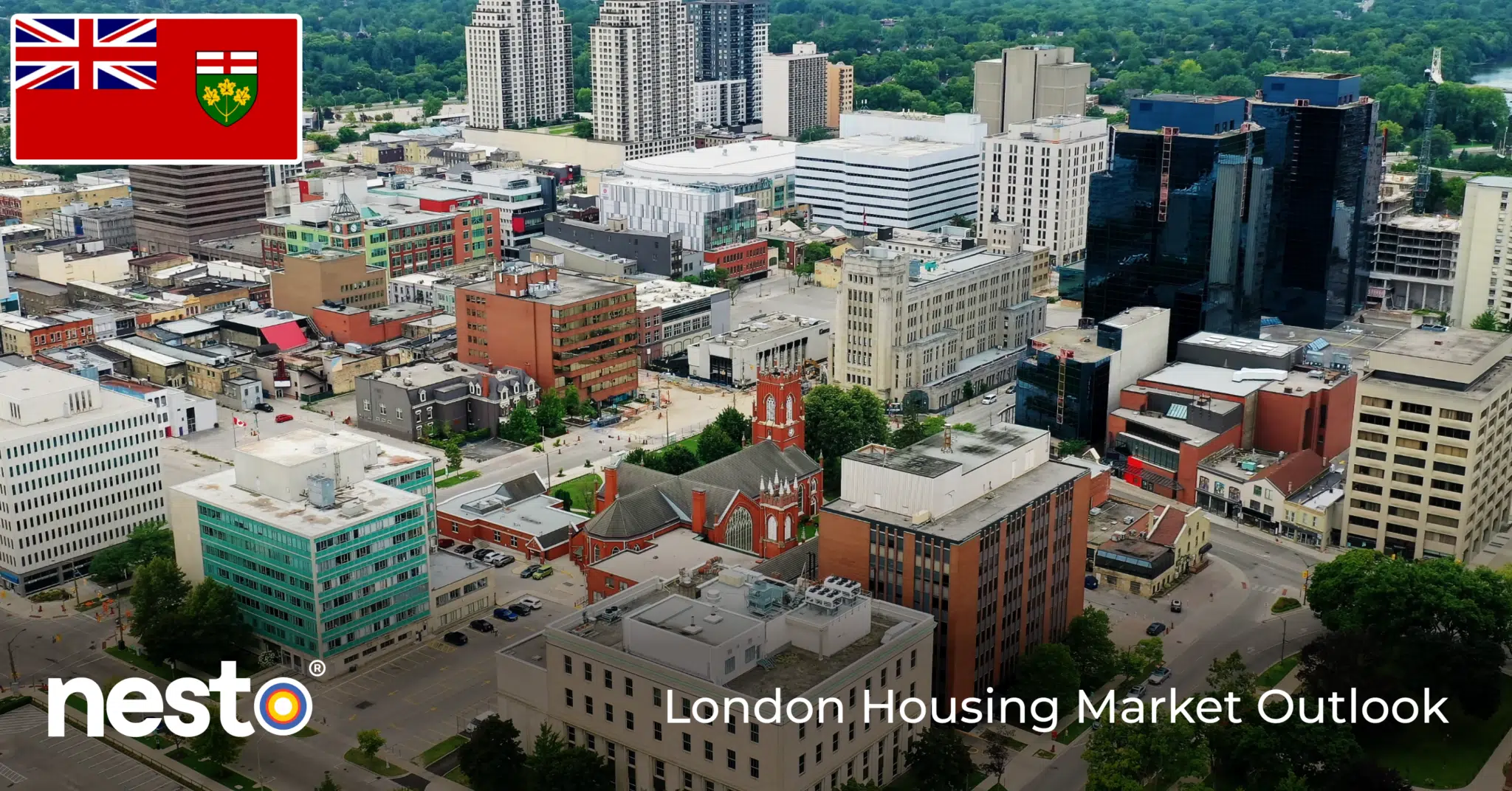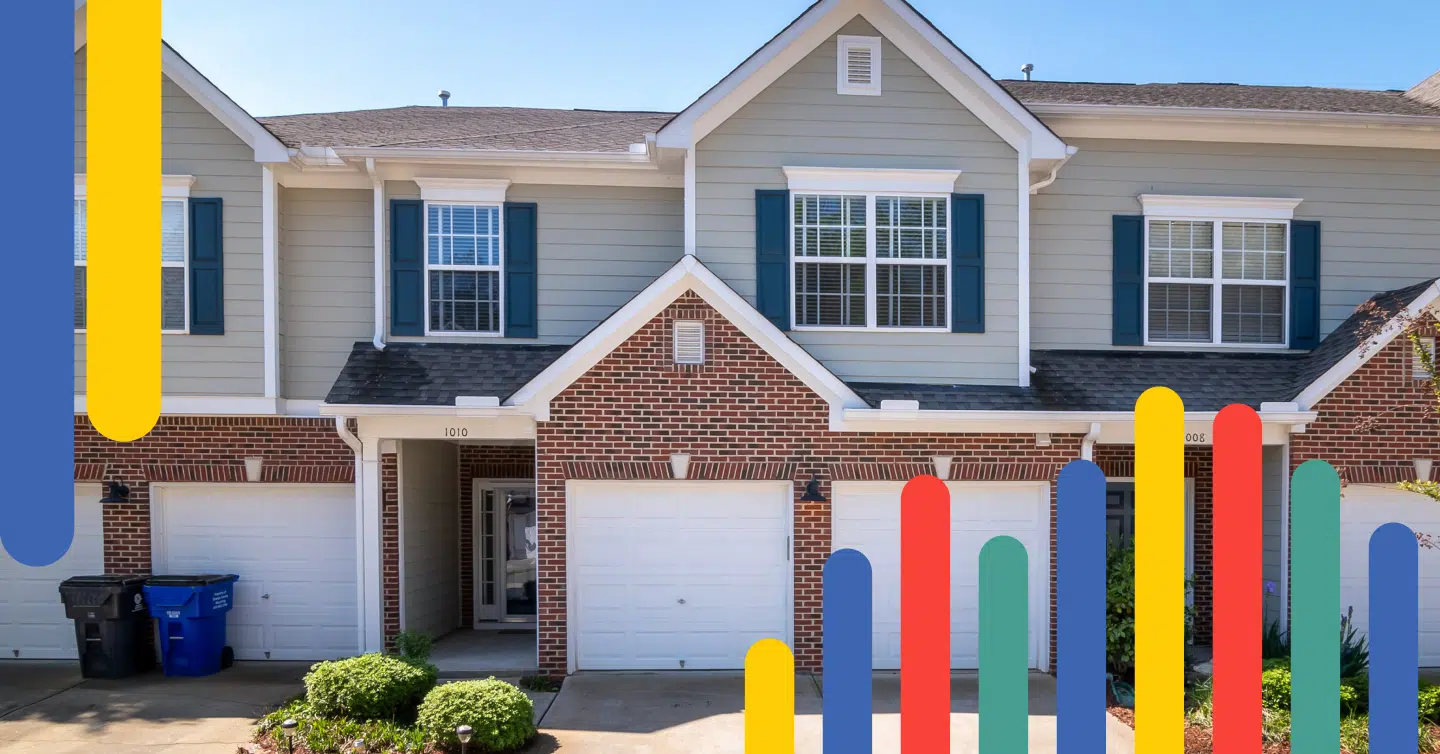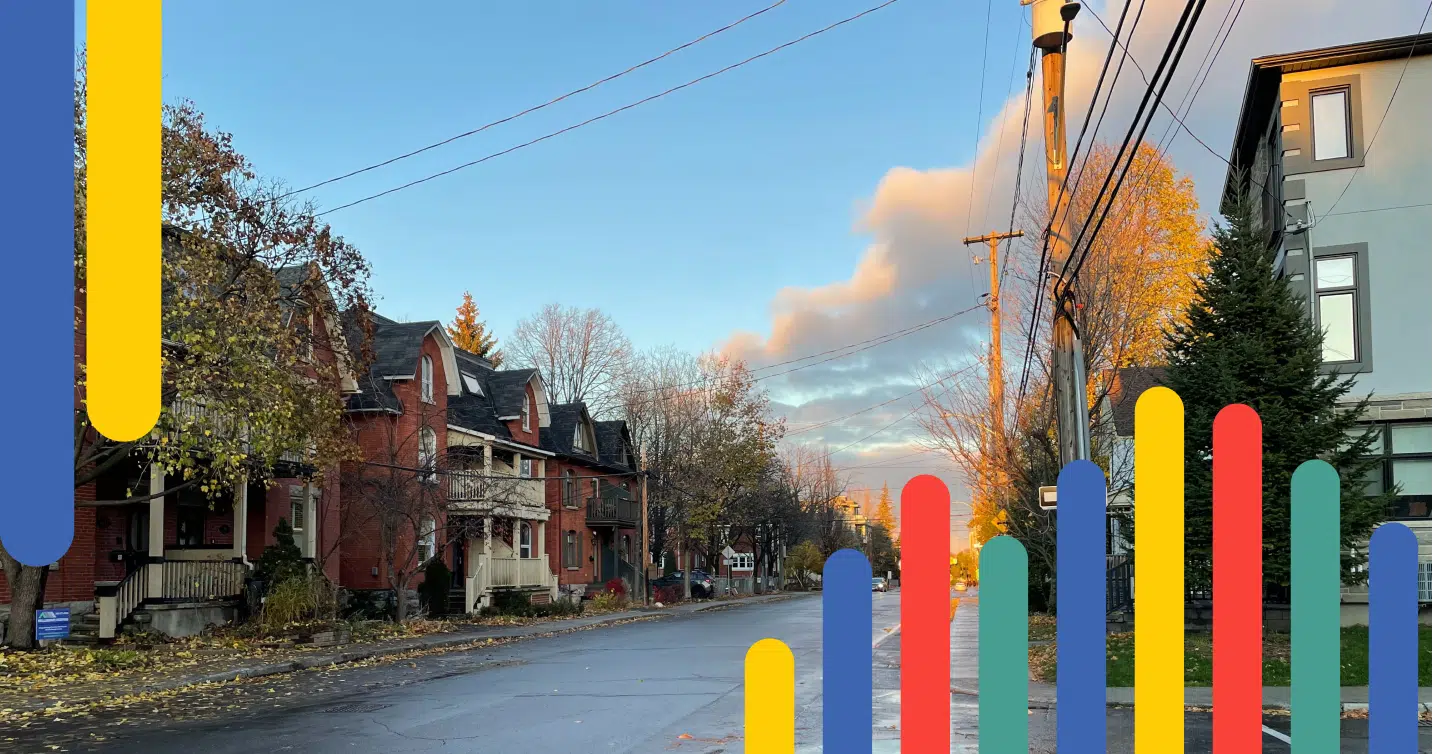London Housing Market Outlook 2025

London Market Report Summary
- The average selling price of a home in London decreased by 7.7% year-over-year to $561,400 in October 2025.
- The average selling price of a single-family home in London decreased by 6.6% year-over-year to $611,900 in October 2025.
- The average selling price of a townhouse/multiplex in London decreased by 5% year-over-year to $463,100 in October 2025.
- The average selling price of a condo in London decreased by 15.9% year-over-year to $346,900 in October 2025.
- The average rent in London decreased by 6.2% year-over-year to $1,929 for October 2025.
- December 12, 2025: Today’s lowest mortgage rate in London is
for a 5-year fixed.
Composite Home Prices
![]()
The average selling price of a home in London was $561,400 for the month of October 2025, that’s decreased by 0.2% compared to the previous month. On a year-over-year basis, London home prices have decreased 7.7% over the last 12 months.
Single-family Home Prices
![]()
The average selling price of a single-family home in London was $611,900 for the month of October 2025, that’s increased by 0.1% compared to the previous month. On a year-over-year basis, single-family home prices in London have decreased by 6.6% over the last 12 months.
Townhouse and Multiplex Prices
![]()
The average selling price of a townhouse in London was $463,100 for the month of October 2025, that’s decreased by 0.9% compared to the previous month. On a year-over-year basis, the price of a townhouse in London has decreased by 5% over the last 12 months.
Condo Prices
![]()
The average selling price of a condo in London was $346,900 for the month of October 2025, that’s decreased by 2.8% compared to the previous month. On a year-over-year basis, the price of a condo in London has decreased 15.9% over the last 12 months.
We’re curious…
Are you a first-time buyer?
London Housing Market Summary
Data from the London and St. Thomas Association of Realtors (LSTAR) indicates that the average price of resale residential homes sold across London in October 2025 was $561,400, and it decreased of 7.7% compared to a year ago.
LSTAR also reported a sales-to-new-listings ratio (SNLR) of 42%, indicating a Balanced in London for October 2025.
London Home Sales Rise 14% Month Over Month as Inventory Reaches 10-Year High
According to the London and St. Thomas Association of Realtors (LSTAR), London’s housing market showed encouraging signs in October with 607 homes sold, up from 534 in September. While home sales were 8.7% lower than in October 2024, activity remained well above 2023 levels, highlighting steady buyer engagement despite shifting economic conditions. Inventory reached its highest level in a decade, giving buyers more choice and increasing the importance of accurate pricing for sellers.
October Market Highlights
• 607 home sales in October, up from 534 in September
• Home sales down 8.7% year over year
• Average home price at $605,560, down 3.7% annually
• Inventory at more than 5 months, the highest in 10 years
• Year-to-date sales at 6,057, similar to the past 2 years
Benchmark Trends by Property Type Reflect Moderate Movements
Benchmark prices for LSTAR’s property types showed modest month-to-month adjustments. The data points to a market undergoing gradual, expected adjustments in line with rising inventory and seasonality.
• The composite benchmark was $561,400, down 0.2% from September
• The single-family benchmark was $611,900, up 0.1%
• The 1-storey benchmark was $556,200, up 1.3%
• The 2-storey benchmark was $657,400, down 0.8%
• The townhouse benchmark was $463,100, down 0.9%
• The apartment benchmark was $346,900, down 2.8%
Regional Price Differences Show a Wide Range of Market Conditions
Across LSTAR, the benchmark price was $561,400, and the average was $605,560. But conditions varied widely across regions in October.
- Central Elgin recorded an average price of $665,450 with a benchmark of $610,800
- London East remained the most affordable area with an average price of $498,887 and a benchmark of $435,200
- London North posted higher price points, with an average of $674,297 and a benchmark of $637,500
- London South followed at $631,419, while Middlesex Centre reached one of the highest averages at $823,056
- St. Thomas averaged $559,650, and Strathroy-Caradoc reported $561,683
Inventory Climbs While Prices Edge Lower
Inventory continued to build across the region, with more than 5 months of supply reported in October. This level of available housing is the highest seen in London and St. Thomas in 10 years. Softer sales combined with rising supply placed light downward pressure on prices. The average sale price declined to $605,560, a 3.7% year-over-year decrease and a 4.1% decrease compared with October 2022. September’s average price of $622,805 underscores the gradual month-to-month shifts occurring across the market.
Market Shift Implications for London Homebuyers and Homeowners
London’s elevated inventory gives buyers a rare advantage, allowing them to compare more homes without the pressure that defined earlier market cycles. Sellers, meanwhile, are adjusting to a landscape where listings take longer to stand out, making pricing discipline and strong presentation more critical than ever. Homeowners looking to refinance are seeing equity hold relatively firm across most areas of the region.
Month-over-Month Market Expectations for London
Transactions – Number of Sales
![]()
The number of sales in London was 607 during October 2025, that’s increased by 13.7% compared to the previous month. On a year-over-year basis, sales in London have decreased by 8.2% over the last 12 months.
New Listings
![]()
The number of new listings in London was 1,458 during October 2025, that’s decreased by 14.3% compared to the previous month. On a year-over-year basis, new listings in London have increased by 5% over the last 12 months.
Real Estate Market
![]()
The sales to new listings ratio (SNLR) in London was 42% during October 2025, indicating a Balanced. On a monthly basis, that’s increased by 32.6% compared to the previous month. London’s yearly sales to new listings ratio has decreased by 12.6% over the last 12 months.
The sales to new listings ratio (SNLR) measures the number of home sales compared to new listings. An SNLR under 40% suggests a buyer’s market in which buyers have the upper hand and more negotiating power. An SNLR between 40% and 60% is a balanced market, while an SNLR of over 60% is considered a seller’s market.
Annual Changes to Composite Home Prices in London
We’re curious…
Are you a first-time buyer?
London Market Rents Summary
The average rent in London was $1,929 for the month of October 2025, which decreased by 6.2% on a year-over-year basis.
The average rent for a bachelor apartment in London was $0 for the month of October 2025, which 0 by 0% on a year-over-year basis.
The average rent for a 1-bedroom apartment in London was $1,688 for the month of October 2025, which decreased by 6.4% on a year-over-year basis.
The average rent for a 2-bedroom apartment in London was $2,083 for the month of October 2025, which decreased by 5.1% on a year-over-year basis.
The average rent for a 3-bedroom apartment in London was $1,688 for the month of October 2025, which decreased by 5.1% on a year-over-year basis.
How Does Renting Compare with Homeownership in London?
Each $100,000 in mortgage balance costs an average of $520.07 per month on nesto’s lowest fixed 5-year rate at
The rates used for calculation are those offered for insured purchases with less than a 20% downpayment and a 25-year amortization. Canada’s policy rate is 2.25%, and nesto’s prime rate is set to 4.45%.
Rental Price Changes by City
Rental Price Changes by Province
Rental Price Growth by Housing Type
We’re curious…
Are you a first-time buyer?
Frequently Asked Questions (FAQ) on London Housing Market Outlook for 2025
Will home prices in London rise in 2025?
London’s home prices are expected to stabilize with slight increases in 2025. The city’s affordability and proximity to the Greater Toronto Area (GTA) make it attractive for buyers seeking better value.
Is London a good city to buy a home in 2025?
London remains a top choice for buyers priced out of larger cities like Toronto. It offers substantial investment opportunities, affordable housing, growing infrastructure, and a demand for suburban living.
Will mortgage rates improve affordability in London?
Falling mortgage rates in 2025 will increase affordability, attracting first-time homebuyers (FTHB) and investors to London’s housing market.
How affordable will London homes be in 2025?
London’s housing prices will remain significantly more affordable than those of cities like Toronto. Options for single-family homes, condos, and townhouses will meet various budgets.
What trends will drive London’s housing market?
Affordability, increasing demand from GTA buyers, and population growth will drive London’s housing market into 2025.
Why Choose nesto
At nesto, our commission-free mortgage experts, certified in multiple provinces, provide exceptional advice and service that exceeds industry standards. Our mortgage experts are salaried employees who provide impartial guidance on mortgage options tailored to your needs and are evaluated based on client satisfaction and the quality of their advice. nesto aims to transform the mortgage industry by providing honest advice and competitive rates through a 100% digital, transparent, and seamless process.
nesto is on a mission to offer a positive, empowering and transparent property financing experience – simplified from start to finish.
Contact our licensed and knowledgeable mortgage experts to find your best mortgage rate in Canada.
Ready to get started?
In just a few clicks, you can see our current rates. Then apply for your mortgage online in minutes!



